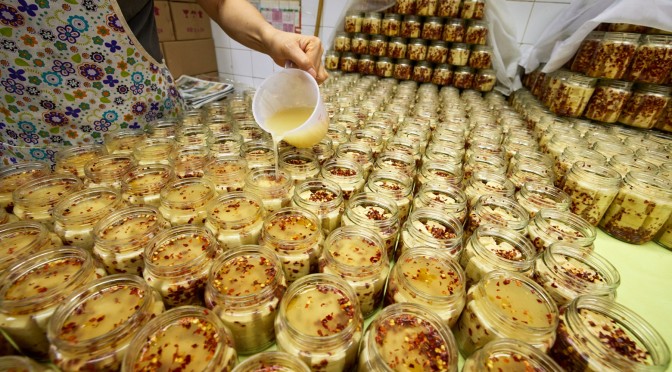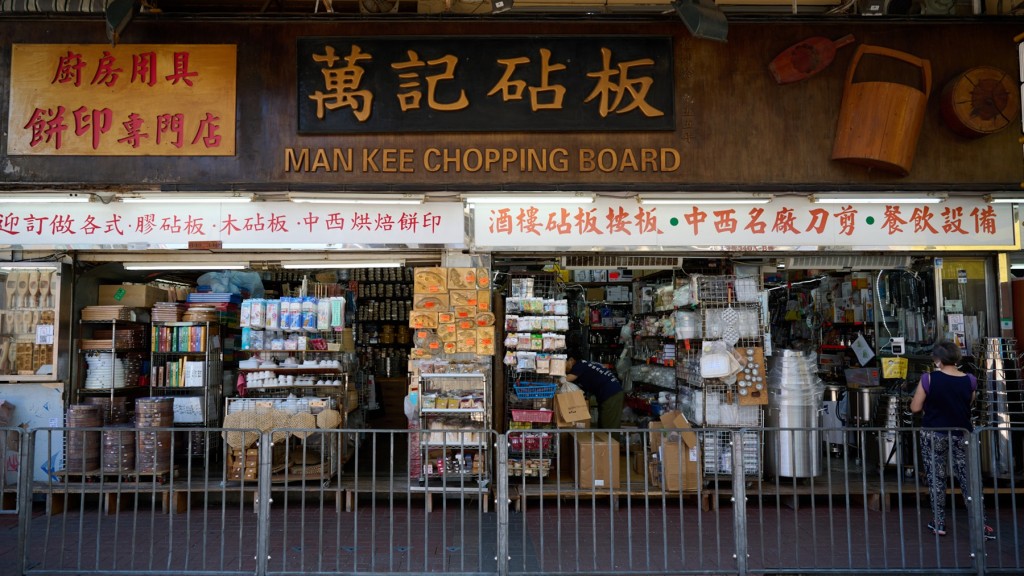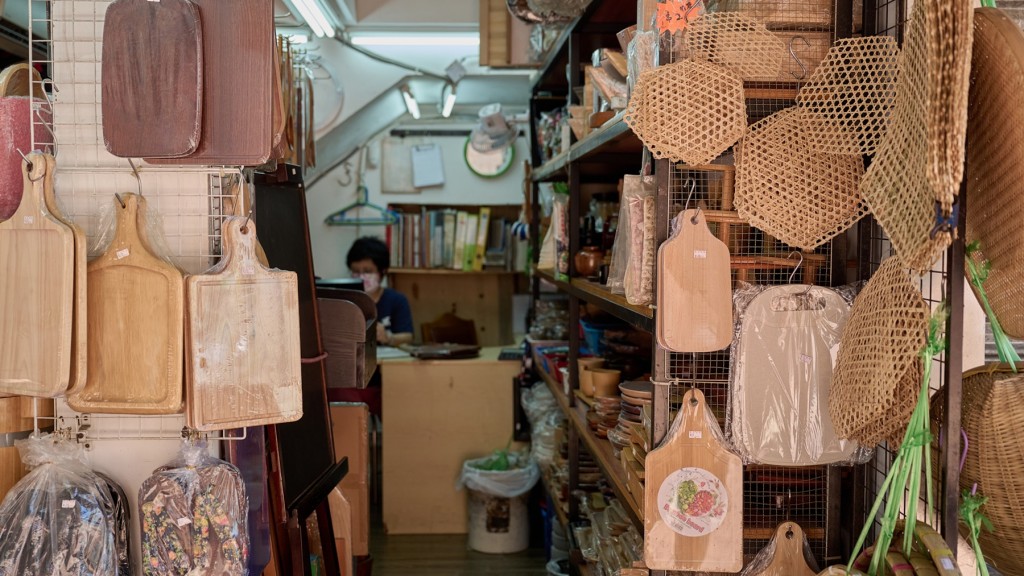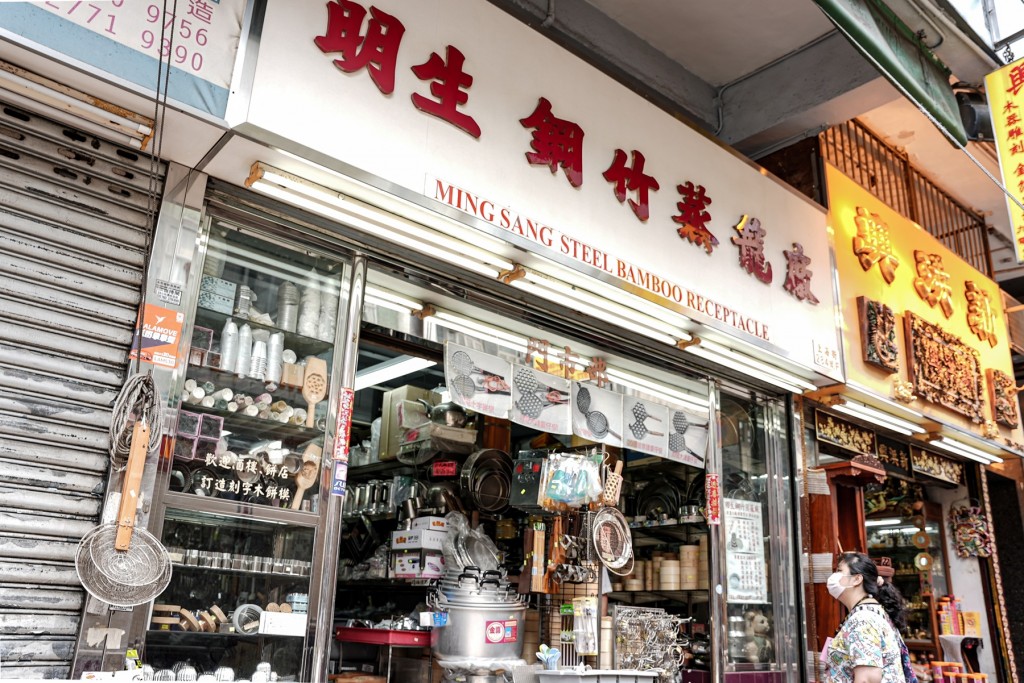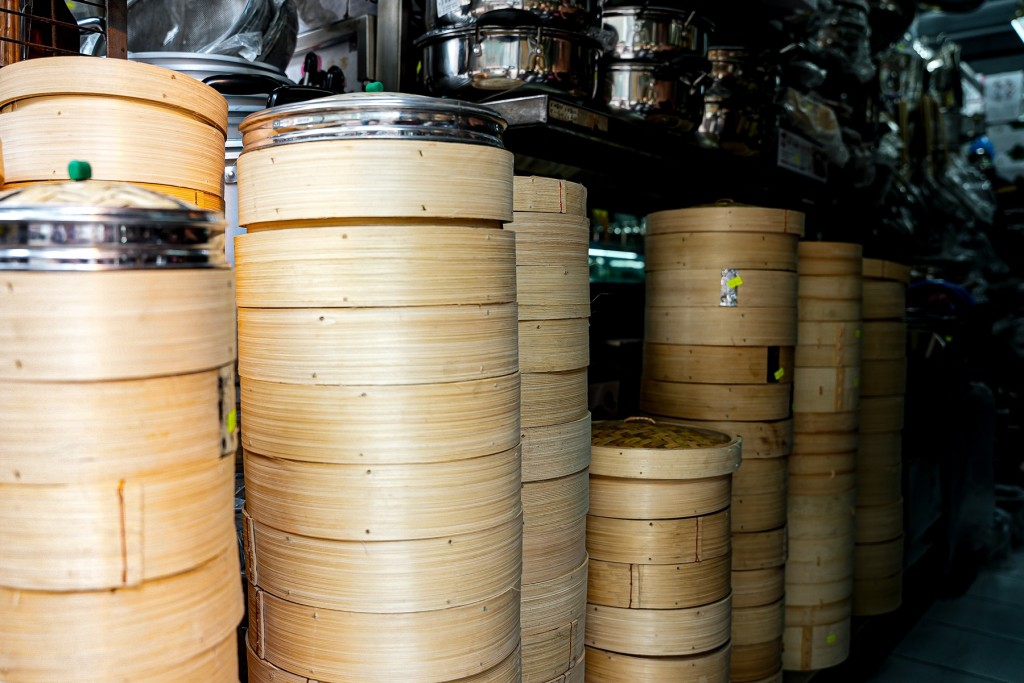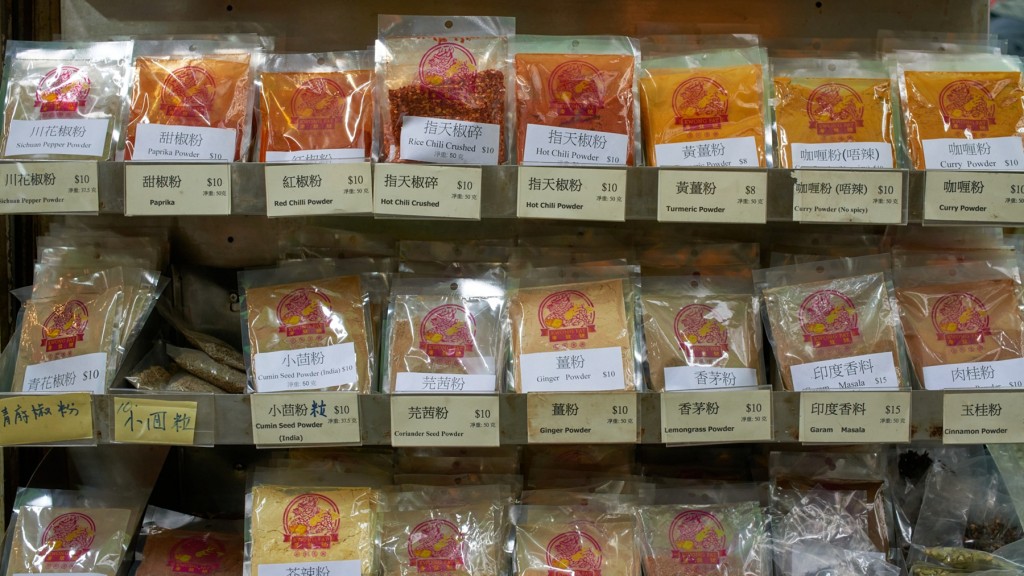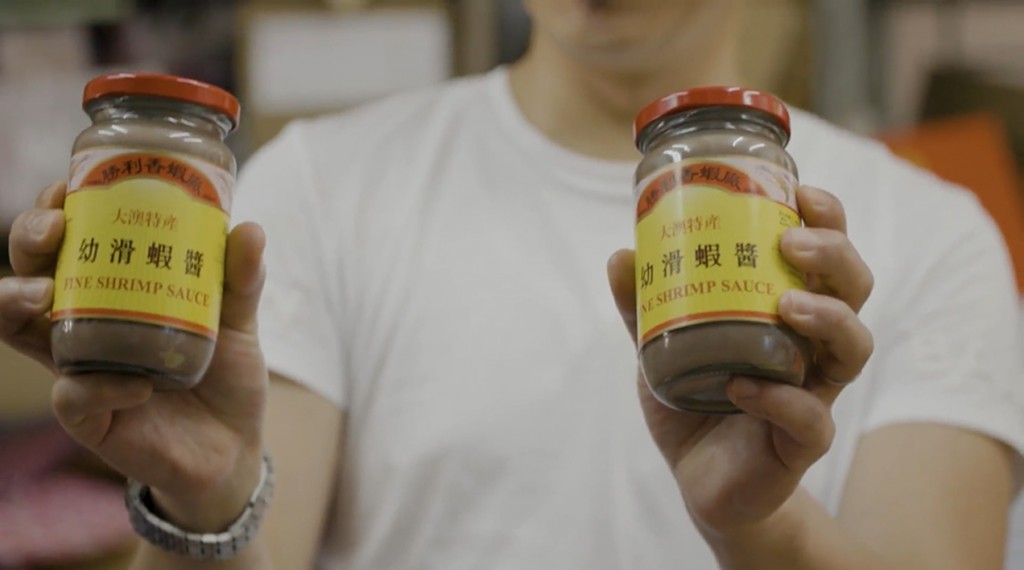Hong Kong Dishes Out Culinary Secrets
Every chef has culinary secrets that they hold close to their hearts. Some rave over an ingredient that imparts a unique flavour, others swear by tools which make life easier in the kitchen. And, every now and then, we uncover some of these secrets, bridging the gaps between us and the chefs we admire while giving us a chance to recreate culinary magic at home.
Hong Kong is one of the most recognisable cities in the entire world and you would think the city and its neighbourhoods are an open book. But, home to an estimated 15,000 restaurants, this city is packed with an unimaginable amount of glorious food and a shelf load of culinary secrets to spill.
Secret #1: Freshest Ingredients at Aberdeen Seafood Market
When we explore Hong Kong’s neighborhoods on foot, we can feel the beat of the city and see what’s in between tourist spots,” explains Danny Yip, proprietor of one-Michelin-starred Cantonese restaurant The Chairman. “Those in-betweens are hidden gems that are often the most memorable.”
Yip and The Chairman put a premium on freshness and locally-sourced ingredients, taking their cue from Cantonese cuisine. That’s why Yip recommends Aberdeen Seafood Market as their first stop of the day.
Hong Kong’s only wholesale fish market opens before dawn, selling freshly-caught grouper, razor clams, flathead lobster, and marine fish, all at a good price. The Chairman sends a former fisherman here at 5:30am every day to handpick live seafood for the restaurant.
This early start helps realise The Chairman’s signature dish, steamed fresh flower crab with aged Shaoxing wine and fragrant chicken oil. Steaming is a classic Cantonese cooking technique that preserves the crabs’ fresh flavour.
To further elevate the shellfish, The Chairman prepares a special steamed clam juice to impart a deeper umami flavour. The idea is to pair seafood with seafood.
Secret #2: Source of the sauce at Kwun Tong
In the industrial district of Kwun Tong in Kowloon, Yip often visits Tai Ma Sauce Co., a half-century-old sauce manufacturer now run by its third generation.
While Tai Ma sells a wide variety of picked vegetables, condiments and sauces, Yip saves his highest praises for Tai Ma’s ten-years’ preserved lemon as according to him it has flavors that couldn’t be achieved at the hands of a chef, but only through time.
Tai Ma’s aged lemon is a key ingredient in Chairman’s other signature dish: razor clams steamed with aged lemon and mixed herbs. The lemon imparts an additional umami dimension to the razor clams’ natural flavour.
“Razor clams have a high density—it gives you a mouthfeel when you bite into it,” Yip explains. “Only [then] can it withstand the flavor of the aged lemon, which can be pungent and even overpowering.”
Secret #3: Tools of the trade at Shanghai Street
As the saying goes – a man is only as good as his tools – for chefs, their tools define them and West Kowloon’s Yau Ma Tei district is the perfect place for chefs to replenish their tools of the trade. The Shanghai Street area has generations-old shops selling all sorts of kitchen knick-knacks, from steel kitchenware to knives, to steamers, all heritage brand names of their own.
Man Kee Chopping Board, founded in 1955, is Hong Kong’s only specialty shop devoted to wooden chopping boards. Their massive boards are sliced-up from sturdy tree trunks and treated to provide the right heft and resilience to accommodate Chinese chefs’ heavy chopping action. “Wood is what we call a ‘hard sponge’,” third-generation owner and manager Mike Au explains. “When you chop things, they will absorb your ‘heat’, so your hand will be safer.”
For knives and cleavers, chefs gravitate to Chan Chi Kee, whose knowledgeable staff members advise longtime patrons on the best steel for the job. Four craftsmen turn out the shop’s famous handmade knives; they offer a lasting edge appreciated by chefs from Chinese restaurants all over the world.
Bamboo steamers are a familiar fixture in Cantonese cuisine — Ming Shan Steel Bamboo Receptacle offers them in different shapes and sizes. The owner of the store, Master Lui Ming — who is more than 90 years old — began handmaking bamboo steamers when he was 32 years old. He pioneered the use of steel rims and joins in bamboo steamers, which resulted in a longer-lasting product that has gained widespread popularity in Chinese restaurants all over the world. The Shanghai Street store is now run by his son, but Master Lui still spends his days making custom orders in his Tuen Mun factory, channeling his lifelong passion for his craft into dreaming up new inventions and perfecting his old ones.
Secret #4: Yau Ma Tei’s flavourful surprises
West Kowloon’s family-run establishments have long safeguarded Hong Kong’s culinary treasures, selling spices and condiments that explode with local flavour. A few other secret shops in Yau Ma Tei offer a glimpse (and a whiff) of Hong Kong chefs’ secret weapons for taste.
The century-old Kwong Fat Spices is a favourite haunt for chefs looking for spice powders, chili oil, and Hong Kong style curry (which the shop claims to have invented). The package design has remained unchanged for ages, attesting to the long heritage and trust Kwong Fat retains among its clientele.
The unique flavours of Hong Kong’s cha chaan teng dishes come from the spices that Kwong Fat specialise in—you’ve probably already experienced their work without even knowing it!
Liu Ma Kee Fermented Tofu Store rounds out the Yau Ma Tei chef’s circuit, a favoured source for fermented wet bean curd that’s made the same way since it first opened a hundred years ago—with a traditional stone mill, using a closely-guarded family recipe.
The intense umami flavour of fermented tofu is an acquired taste for Westerners unused to Chinese cooking styles, but Hongkongers love the kick it imparts to sauces, marinades, and even as a topping for plain white rice! To keep up with the times and stay relevant to a younger audience, the current generation running the store has even invented a fermented wet bean curd carbonara sauce.
Secret #5: Old-school umami at Tai O
There’s one last stop, far to the east on Lantau Island: the fishing village of Tai O, source of Hong Kong’s favourite shrimp paste. Local trawlers catch tiny shrimp in the waters off Tai O, then sell their catch to the village’s shrimp paste makers.
Operating out of a nondescript shophouse, Sing Lee is one of the oldest and one of the last few remaining shrimp paste manufacturers in Tai O, dating more than 80 years back. At Sing Lee, the know-hows are passed down through generations and processes still kept handmade. After a weeks-long process of salting, fermenting, grinding and drying, the shrimp paste is shaped into pliable pink bricks, ready to add a salty zing to stir-fried water spinach or the Cantonese fried chicken har cheong gai.
For many visitors to picturesque Tai O, the dried seafood and produce only tells half of Tai O’s story. They are attracted to the fishing village’s vintage charm, the surrounding nature and the laidback, idyllic island life that is uncommon in cosmopolitan Hong Kong.
Exploring the flavourful side of Hong Kong will always leave you wanting more. Luckily, there’s always a full meal’s worth waiting for you! Check out other episodes of Michelin and HKTB’s series “Hong Kong Chefs’ Playbook”, featuring Chef Vicky Lau of TATE Dining Room, Chef Vicky Cheng of VEA, Chef Shane Osborn of Arcane and Danny Yip of The Chair via HKTB’s official YouTube and Facebook @discoverHongKong and @MichelinGuideWorldwide.
5 เคล็ดลับขึ้นหิ้ง…ที่ทำให้ “อาหารฮ่องกง” ครองใจคนทั้งโลก
ฮ่องกงเป็นหนึ่งในเมืองท่องเที่ยวที่รู้จักกันดี จนคุณเองอาจคิดว่าคุณรู้จักทุกซอกทุกมุมของเมืองและย่านต่างๆ หมดแล้ว แต่จริงๆ แล้ว ฮ่องกง…แหล่งรวมภัตตาคารกว่า 15,000 ร้าน ยังอัดแน่นไปด้วยอาหารรสเลิศจำนวนมากที่คุณต้องคาดไม่ถึง รวมถึงเคล็ดลับการทำอาหารขึ้นหิ้งที่รอคอยการถูกเปิดเผยอยู่นับไม่ถ้วน! เราได้จึงจะออกตามติดเชฟชื่อดังของฮ่องกงเพื่อเรียนรู้ความลับของอาหารฮ่องกงที่กำลังจะถูกเปิดเผย
เคล็ดลับ หมายเลข 1: แหล่งวัตถุดิบที่สดใหม่ที่สุด ณ “ตลาดค้าส่งปลาอาเบอร์ดีน”
เริ่มต้นกันด้วยวัตถุดิบสดใหม่ในตลาดขายส่งอาหารทะเลแห่งเดียวในฮ่องกงอย่าง “ตลาดค้าส่งปลาอาเบอร์ดีน” ที่จำหน่ายอาหารทะเลสดๆ จากทะเล ทั้งปลาเก๋า หอยหลอด กั้งกระดาน และ ปลาทะเลอื่นๆ อีกมากมายในราคาที่จับต้องได้ ซึ่งแดนนี่ ยิป เจ้าของร้าน The Chairman ร้านอาหารกวางตุ้งดีกรีมิชลินสตาร์ระดับหนึ่งดาว ผู้ซึ่งให้ความสำคัญกับความสดใหม่และวัตถุดิบจากท้องถิ่นเป็นอันดับหนึ่งตามวิถีอาหารกวางตุ้งแท้ จะส่งพนักงานอดีตชาวประมงไปเลือกวัตถุดิบจากทะเลตั้งแต่ตีห้าครึ่งในทุกๆ วัน จนทำให้ The Chairman สามารถรังสรรค์เมนูซิกเนเจอร์อย่าง “ปูม้าสดนึ่งเหล้าจีนกับมันไก่กลิ่นหอม” โดยใช้การนึ่งซึ่งเป็นเทคนิคดั้งเดิมในการทำอาหารกวางตุ้งที่ช่วยรักษารสชาติความสดของปูเอาไว้
เคล็ดลับ หมายเลข 2: ที่สุดแห่งซอส ณ “กวนตง”
หากจะพูดถึงซอสแล้วก็คงต้องไปที่ร้าน Tai Ma Sauce ในย่านกวนตง ซึ่งดำเนินกิจการผลิตซอสมามากกว่าครึ่งศตวรรษ จำหน่ายผักดอง เครื่องปรุงรส และซอสหลากหลายประเภท ซึ่งแดนนี่ยกให้มะนาวดอง 10 ปีของ Tai Ma Sauce เป็นสินค้าขึ้นแท่น เพราะแดนนี่เชื่อว่านี่คือรสชาติที่เชฟไม่สามารถปรุงออกมาได้ ต้องผ่านกระบวนการของเวลาเท่านั้น มะนาวดองของ Tai Ma Sauce จึงเป็นวัตถุดิบหลักในอีกหนึ่งเมนูซิกเนเจอร์ของ The Chairman อย่าง “หอยหลอดนึ่งมะนาวดองกับสมุนไพร” โดยความลับของมะนาวดองคือการช่วยเพิ่มมิติของรสธรรมชาติในหอยหลอดที่มีเนื้อแน่นให้กลมกล่อมมากขึ้น
เคล็ดลับ หมายเลข 3: เครื่องมือทำมาหากินบน “ถนนเซี่ยงไฮ้”
สำหรับเชฟแล้ว อุปกรณ์ดี…มีชัยไปกว่าครึ่ง อุปกรณ์ทำครัวจึงเป็นสิ่งที่นำเสนอตัวตนของพวกเขา เราขอพาทุกท่านมาบุกถนนเซี่ยงไฮ้ ย่านเหยามาเต่ย ในเขตเกาลูนตะวันตก ที่เต็มไปด้วยร้านค้าที่จำหน่ายอาวุธลับประจำครัวหลายประเภท ซึ่งล้วนแต่เป็นร้านเก่าแก่ทั้งสิ้น
ร้านเขียง Man Kee ก่อตั้งในปี ค.ศ. 1955 เป็นร้านเดียวในฮ่องกงที่มีชื่อเสียงในด้านเขียงไม้ เขียงขนาดใหญ่ของร้านทำมาจากท่อนไม้เนื้อแข็งที่ตัดมาจากส่วนลำต้น และนำมาตัดแต่งจนได้น้ำหนักที่เหมาะสม และมีความยืดหยุ่นทนทานพอที่จะรับแรงสับจากมีดขนาดใหญ่ของพ่อครัวอาหารจีนได้
ถัดไปอีกนิดคือร้าน Chan Chi Kee ร้านจำหน่ายมีดและอีโต้ ที่เชฟหลายคนมักจะต้องมาเยือน ซึ่งมีจุดขายที่พนักงานผู้เชี่ยวชาญ 4 ท่าน ที่คอยให้คำแนะนำลูกค้าเพื่อให้ได้วัสดุที่เหมาะสมกับงาน บวกกับปลายมีดอันทนทานซึ่งได้รับเสียงชื่นชมจากร้านอาหารจีนทั่วโลก
ซึ้งไม้ไผ่นั้นเป็นอุปกรณ์ที่คุ้นเคยกันดีสำหรับอาหารกวางตุ้ง ทำให้เราต้องมาแวะร้านภาชนะไม้ไผ่เหล็ก Ming Shan ต้นตำหรับของซึ้งไม้ไผ่ขอบเหล็ก เจ้าของร้านคุณหลิว หมิงวัย 90 ปี เริ่มต้นการทำซึ้งเมื่ออายุ 32 เขาเป็นผู้บุกเบิกในการนำขอบเหล็กมาประกอบเข้ากับซึ้งไม้ไผ่ ซึ่งทำให้สินค้ามีความคงทนมากขึ้น จนได้รับความนิยมในหมู่ร้านอาหารจีนทั่วโลก
เคล็ดลับ หมายเลข 4: รสชาติที่คาดไม่ถึงใน “เหยามาเต่ย”
ถ้าพูดถึงแก่นแท้ของรสชาติอาหารฮ่องกง ต้องยกความดีความชอบให้กับ ร้านเครื่องเทศและเครื่องปรุงรสที่เปิดขายอยู่ในย่านเหยามาเต่ย อันเป็นอาวุธลับของเชฟในฮ่องกง
เริ่มต้นกันที่ร้านเก่าแก่อายุกว่าร้อยปีอย่าง Kwong Fat Spices คือร้านประจำสำหรับเชฟที่กำลังมองหาผงเครื่องเทศ น้ำมันพริก และ แกงกะหรี่สไตล์ฮ่องกง เครื่องเทศจากร้าน Kwong Fat จึงถูกใช้อย่างแพร่หลายจนคุณอาจจะเคยได้ลองชิมสินค้าของร้านโดยไม่รู้ตัวก็ได้!
ร้านเต้าหู้หมัก Liu Ma Kee จำหน่ายเต้าหู้เปียกหมักซึ่งยังคงผลิตด้วยกรรมวิธีแบบเดิมตั้งแต่เปิดกิจการครั้งแรกเมื่อประมาณหนึ่งร้อยปีที่แล้ว ด้วยเครื่องโม่แบบโบราณซึ่งเป็นสิ่งที่รักษาต้นตำรับรสชาติประจำตระกูลไว้ ด้วยรสชาติเข้มข้นของเต้าหู้หมักนั้นอาจไม่ถูกปากชาวตะวันตกในครั้งแรก แต่ชาวฮ่องกงกลับชอบนำมาใช้เป็นซอส ใช้สำหรับหมัก หรือนำไปราดกับข้าวสวย! และทางร้านยังมีการปรับปรุงสูตรให้เหมาะกับกลุ่มลูกค้าวัยรุ่นมากขึ้น ด้วยไม้เด็ดอย่างซอสคาร์โบนาราหมักเต้าหู้เปียก
เคล็ดลับ หมายเลข 5: “ไท่โอ” เก่าแต่กลมกล่อม
เคล็ดลับสุดท้ายอยู่ไกลออกไปทางฝั่งตะวันออกของเกาะลันเตานั่นก็คือ หมู่บ้านชาวประมงไท่โอ แหล่งกะปิกุ้งในดวงใจชาวฮ่องกง ซึ่งทำจากกุ้งท้องถิ่นขนาดจิ๋วในเขตชายฝั่งไท่โอ
ร้าน Sing Lee หนึ่งในร้านที่เก่าแก่ที่สุดที่ยังคงเหลืออยู่ไม่กี่แห่งในหมู่ผู้ผลิตกะปิกุ้งของไท่โอ ด้วยกรรมวิธีการผลิตด้วยมือแบบดั้งเดิม หลังจากผ่านกระบวนการการแช่เกลือ หมัก กวน และตากแห้งอันยาวนาน เตรียมพร้อมสำหรับใส่ในเมนูเด็ดประจำถิ่นอย่าง ผัดผักบุ้ง หรือจะเป็นฮาชองไก…ไก่ทอดแบบกวางตุ้ง (Har Cheong Gai)
นอกจากการตามหาแหล่งเคล็ดลับอาหารฮ่องกงแล้ว ที่เกาะแห่งนี้ท่านจะได้เพลิดเพลินไปกับความงดงามดั่งภาพวาดของไท่โอมนต์เสน่ห์แห่งหมู่บ้านชาวประมงอันเก่าแก่ ธรรมชาติที่รายล้อม และวิถีชีวิตบนเกาะอันเรียบง่าย ซึ่งแตกต่างจากบรรยากาศฝั่งเมืองของฮ่องกงอย่างสิ้นเชิง
หลังจากที่ได้เรียนรู้เคล็ดลับจากเชฟชื่อดังของฮ่องกงแล้ว ฮ่องกงยังคงเตรียมพร้อมรอเวลาที่จะได้ต้อนรับคุณด้วยเมนูอาหารชั้นเลิศอีกมากมายที่คุ้มค่ากับการรอคอยของคุณอย่างแน่นอน รับชมซีรีส์จากมิชลิน ไกด์และ การท่องเที่ยวฮ่องกง “Hong Kong Chefs’ Playbook” เรื่องราวสุดพิเศษของเชฟฮ่องกง ที่รวบรวมเอาเรื่องราวของเชฟ วิกกี้ เลา จาก TATE Dining Room, เชฟวิกกี้ เชง จาก VEA,เชฟเชน ออสบอร์น จาก Arcane และแดนนี่ ยิป จาก The Chairman เอาไว้ผ่านช่อง YouTube ของ การท่องเที่ยวฮ่องกง และ Facebook: @discoverHongKong และ @MichelinGuideWorldwide.

